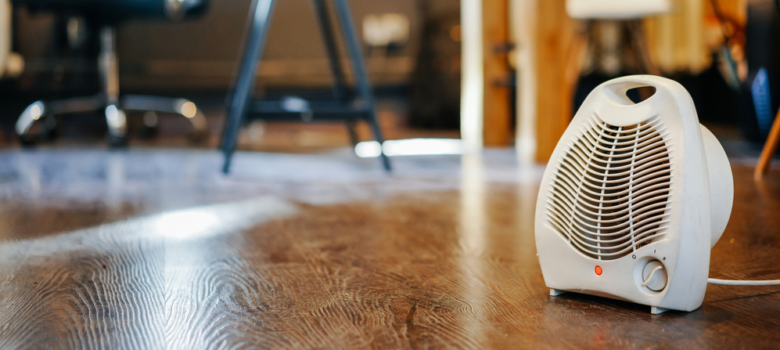
As the weather begins to turn chillier and our sunburn starts to fade, a lot of us finding out attention turning to heating.
It’s no secret that electric heating is more expensive than gas; here in the UK the cost of electricity is 10-15p/kWh and the cost of gas is just 3.5-4p/kWh. Even accounting for the inefficiency of gas, it’s still around 3 times cheaper. That said, there are plenty of homes across the UK without access to gas, and even those that are sometimes find our central heating just can’t provide enough warmth for the chillier times.
That’s when it’s time to start scouring the Argos catalogue for an electric heater.
The heater running costs below are based on average standard tariff costs (with the exception of storage heaters). So what is the cheapest electric heater to run?
Fan heater running costs

If you’re thinking of getting a heater like this, make sure that all the doors and windows of the room are closed and any chimneys are blocked. This way the room can hold the heat even after you’ve turned it off and the fan heater running costs will be significantly reduced.
- Fan heater price: £15 upwards
- Fan heater running cost: Around 28p per hour for a 2kw heater
- Verdict: Not bad if used effectively, but very expensive if the room is draughty
Oil-filled heater running costs

Unlike a fan heaters, which is directional and instantaneous, an oil-based system heats the room more slowly and evenly. It’s a bit less just-got-in-from-the-cold and a bit more pop-it-on-and-settle-down-in-front-of-the-telly.
Since it’s just another way of achieving convection heating, the same rules apply as with fan heaters. Keep all draughty areas sealed up and yell loudly at anyone that leaves the door open.
- Oil-filled heater price: £20 upwards
- Oil-filled heater running cost: Around 21p per hour for a 1.5kw heater
- Verdict: Very similar costing to other fan heaters, but provide a more even heat
Halogen heater running costs

While the first two examples operate on convection heating, a halogen heater uses radiant heat to warm you up. This means they skip the step of heating the air and jump straight to heating everything else – you, the walls, the sofa, the pet rabbit. When you’re out on a cold day but can still feel the warmth of the sun, that’s radiant heat.
Unlike with convection, you don’t need to worry so much about draughts and open doors. Since radiant heat doesn’t focus on warming the air, it doesn’t matter as much if the air escapes the room. This is why infrared and halogen are used so much in public places, where people and coming and going and it’s difficult to keep the air in.
Halogen heaters use the infrared rays in a focused direction, meaning that you don’t need to waste energy and money heating the full room. For this reason, often a lower wattage of heater is needed, saving you money.
- Halogen heater price: £20 upwards
- Halogen heater running cost: Around 17p per hour for a 1.2kw heater
- Verdict: A great way to stay warm in public and outdoor spaces, as long as you don’t mind the bright glowing element
Infrared panel heater running costs

Whereas a halogen heater uses ‘near infrared’ technology and has a strong, directional heat, infrared panels are ‘far infrared’. This means they have a much wider dispersal and no glowing elements. They can be placed on feet and used portably, but they work best when wall or ceiling mounted.
Again, since they don’t heat the air, they’re perfect for draughty spaces and old houses that would otherwise struggle to keep the heat in. Just be careful if your property has a lot of glass in it – glass can’t hold the infrared heat properly so it’s a bit of a no-go.
- Infrared panel heater price: £100 upwards
- Infrared panel heater running cost: Around 7p per hour for a 500w heater
- Verdict: One of the best ways to heat with electricity (especially for draughty or inconvenient spaces) but high initial cost for the unit
Storage heater running costs

It should note at this point that Economy 7/Economy 10 relies on baseload energy generation, which is maintained by technologies being rapidly overtaken in the UK by newer, renewable sources. Therefore the tariff basis on which a storage heater saves money may, in a few years time, cease to be an option.
They’re big, bulky, expensive to buy, and run the risk of becoming obsolete. That said, they can be fairly cheap to run when used properly, plus a high performance storage heater is still the only electrical heating system that can improve an EPC rating.
- Storage heater price: £500 upwards
- Storage heater running cost: Around 13p per hour for a 2kw heater
- Verdict: A lot of negative aspects, but the running cost is good if used properly
Additional considerations
- Electric heater are generally considered to be 100% efficient (give or take a few percent). This is standard, so don’t be impressed by a heater boasting that.
- Heaters with a timer function can save you a lot of money by curbing your usage.
- Radiant heat and radiation are not scary words. Infrared and halogen are 100% perfectly safe.
- Recent legislation was passed to ensure that all space heaters were relatively efficient – all non-compliant models are now out of commission, but may still be for sale. Watch out for these by making sure that whatever you’re buying is Lot 20 compliant.
- What? Watts. The wattage of the heater is the most simple way to figure out the running cost.
- Never leave these heaters on overnight. Although all modern space heaters will automatically cut out if they start overheating, it is still both dangerous and expensive to leave them unattended for a long period of time.
- Don’t believe what any of them say about the size of room they will heat. It is entirely dependent on the size, insulation, and nature of the room, and its ability to hold heat.
- Convection is not nearly as efficient as infrared, but it is a helluva lot cheaper to buy.
- Hot air rises!! Don’t put a convection heater on a table or raised surface. Keep it on the floor, the warmth will reach you.
- Know your tariff! Economy 7 is ONLY suitable for storage heaters.
Think we missed something? Do you have a different opinion?
Comment below to get your voice heard…
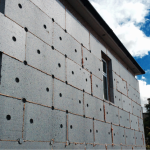
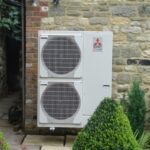

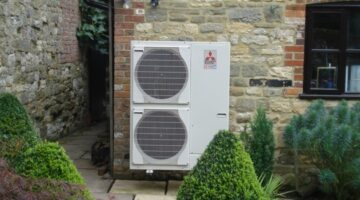

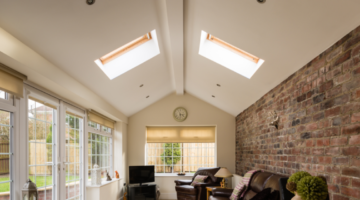






hi there, what about the cost of electric heater compared to gas ?
Gas is always going to be cheaper. It’s about 3 times cheaper than electric 🙂 Not as efficient, but that hardly matters when it’s so much cheaper!
Misleading article, why not make the kw and cost to run the same to be clearer. The cheaper to run appliances are actually more expensive.
Hi Charles,
The reason for not doing that is that they would all be the same! Any two 1kw heaters cost the same because they’re using 1kw of electricity. In this article we instead tried to make the comparison between heaters that would provide similar levels of thermal comfort instead.
Thanks for your comment!
Harriet
You said that infrared is perfect for draughty spaces and old houses but does that mean there is no point in draught proofing if that’s what you’re using?
Hi Zainab,
While it’s true that infrared’s primary heat is the effect we’ve discussed above (ie, hitting you with the infrared radiation and warming you that way), it’s also true that there’s a secondary effect by which the warmed objects in turn push that heat back in to the room. That means that draught proofing will still have a positive effect on the overall comfort of the room.
I would like some help in finding a solution to my elderly mother’s heating problem. She is 92, and spends most of the day sitting in her chair in her small sitting room. The flat is in a sheltered housing block and the only source of heating they supply is storage heaters. Her previous storage heater kept her warm all day, but became very hot at night (too hot to touch) and was uncomfortable for my sister when visiting to sleep in the sitting room. The Management Company have changed the storage heater to a new, digitally controlled storage heater. This new one doesn’t keep her adequately warm, because, they say the thermostatic control only allows input to be triggered at lower than 20 degrees, and because she needs the room to be much warmer than that until 9 or 10 at night, there is not enough time to sufficiently heat the bricks. Whether this is the problem, or because the new heater is restricted from heating above 25 degrees, I dont know. However, she has been using an expensive electric convection heater while this problem is explored. can you offer any suggestions?
infra red, carbon heaters, theyre cheap as cheap can be no £35 on amazon
I moved into an old house and couldn’t afford to replace the heating so had a very cold winter. I used an electric cosy blanket. it will turn off after a period but it will keep you warm for hours…
thanks for the advice!
what about electric options like heat pumps? i know it’s much more expensive to isntall, but what is the running costs once it’s up and running? and factoring in the RHI?
sorry, meant to say – i’m talking about ground source heat pumps for cheapest electric heating.
What about the Rointe heaters? They seem to be written about everywhere I look except here! Is that because they’re no good? They claim to be one of the cheapest electric heaters around but I don’t understand how they’re any better than any other electric heating system
Hi, you say that Economy 7 is ONLY suitable for storage heaters. Does that mean that if you have that tariff you shutoff only get storage heaters? Or just that you can only have storage heaters if you’re in that tariff? I think I’m on economy 7 but want to get rid of my storage heaters because they still work out very expensive to run.
Hi Tom,
If you’re considering getting rid of your storage heaters then I highly recommend that you also switch on to a different tariff.
Harri
Helpful clear sound advice on infrared panel heating
I have far infrared and impressed with the 600W output in 3m square rooms in a refurbished well insulated bungalow, 42mm on the outside walls, 100mm in the loft with Triso foil on top and 50mm kingspan under the floors. I put a 450W mat in the bathroom with a timeclock on 6hrs a day and boost sometimes, the floor acts like a heat brick. But I do have a coal fire in the lounge which is beautiful and cosy but not green. I have CH1 tariff for 8 hours of cheap electric a day and thinking of putting a ceramic tablet storage heater from Germany in the lounge about 1.5kw but only fit 1, which is in the centre of the house and hopefully it can take bite out of a 0 celsius morning in the lounge and kitchen, also use a heat recovery which pulls warm air out of the bathroom and kitchen which filters into the lounge and bedroom, haven’t felt the cold this Winter and wanting to perfect the efficiency of the heating. Insulation is vital my last quarter was £152. I would recommend an air test of new or old properties efficiency though. Wish I could afford PV’s or ground heat source .
You’ve missed out that the use of a ceiling mounted fan (Punka type) will improve the heat distribution by destratification, spreading the heat around more effectively makes it more efficient!
You don’t mention the latest convection panel heaters i.e. Fischer which are supposed to be the best option for heating these days (with a draught free room) at just a few pence per hour.
Hi I am trying to find an electric heater for a small workshop (3mtr sq) that I can leave on though the winter. Cost is less important than safety what do you suggest
ORBIS plug in is the best and cheapest,
Heaters that are powered by electricity are also available on the market. If you have your heart set on purchasing one of these heaters, you should take a look at the best portable heater ratings for each model that is available on the market.
There are new heaters advertised as cheap to run, its the ORBIS Ceramic Heater, Advertised at around £100 but with a discount down to £50.
HOW CHEAP TO RUN ARE THEY. and are the the same as jml or other plug in wall socket heaters
I have purchased one of the new Orbis heaters, our room 12ft by 12 ft, it is the best £50 I have ever spent. Brilliant.